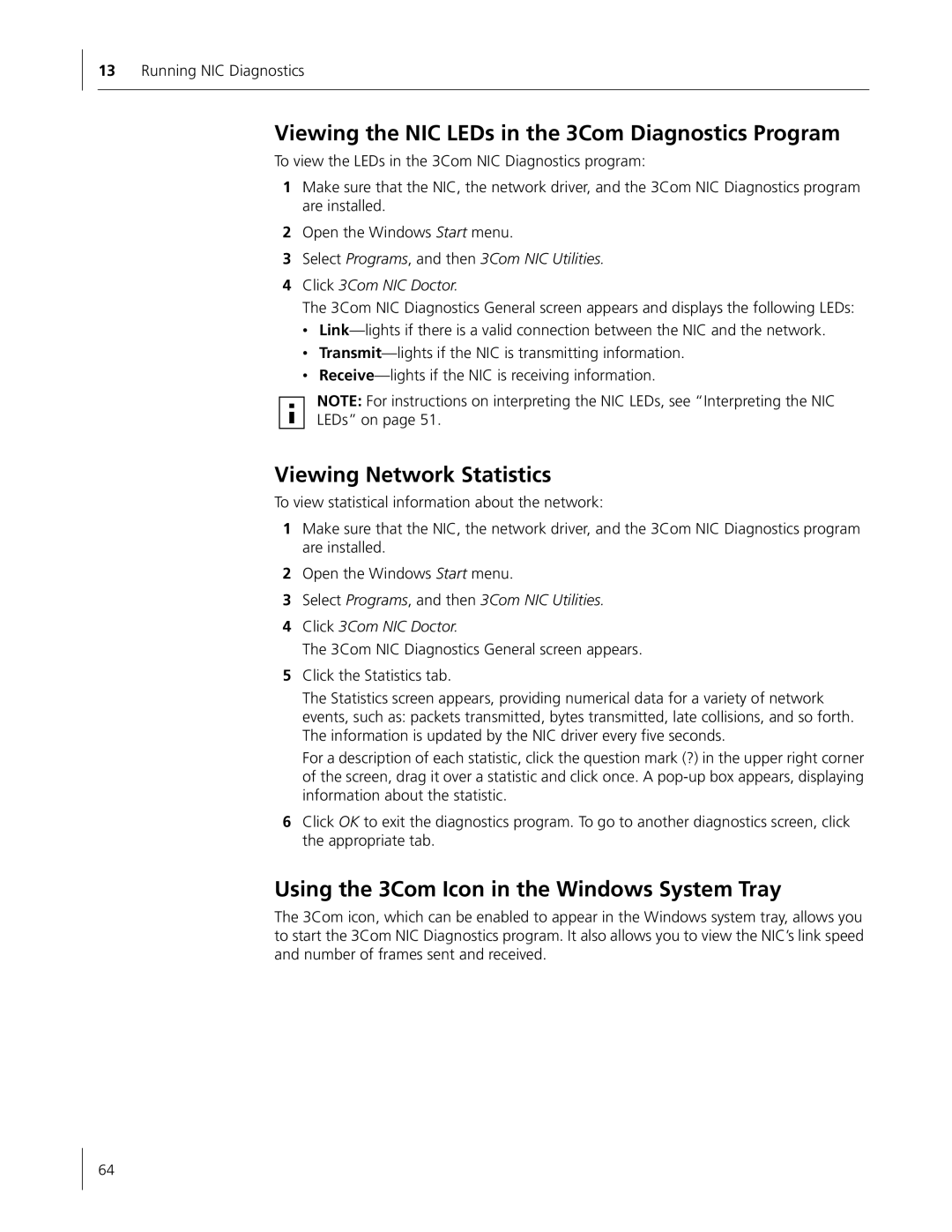
13Running NIC Diagnostics
Viewing the NIC LEDs in the 3Com Diagnostics Program
To view the LEDs in the 3Com NIC Diagnostics program:
1Make sure that the NIC, the network driver, and the 3Com NIC Diagnostics program are installed.
2Open the Windows Start menu.
3Select Programs, and then 3Com NIC Utilities.
4Click 3Com NIC Doctor.
The 3Com NIC Diagnostics General screen appears and displays the following LEDs:
•
•
•
NOTE: For instructions on interpreting the NIC LEDs, see “Interpreting the NIC LEDs” on page 51.
Viewing Network Statistics
To view statistical information about the network:
1Make sure that the NIC, the network driver, and the 3Com NIC Diagnostics program are installed.
2Open the Windows Start menu.
3Select Programs, and then 3Com NIC Utilities.
4Click 3Com NIC Doctor.
The 3Com NIC Diagnostics General screen appears.
5Click the Statistics tab.
The Statistics screen appears, providing numerical data for a variety of network events, such as: packets transmitted, bytes transmitted, late collisions, and so forth. The information is updated by the NIC driver every five seconds.
For a description of each statistic, click the question mark (?) in the upper right corner of the screen, drag it over a statistic and click once. A
6Click OK to exit the diagnostics program. To go to another diagnostics screen, click the appropriate tab.
Using the 3Com Icon in the Windows System Tray
The 3Com icon, which can be enabled to appear in the Windows system tray, allows you to start the 3Com NIC Diagnostics program. It also allows you to view the NIC’s link speed and number of frames sent and received.
64
